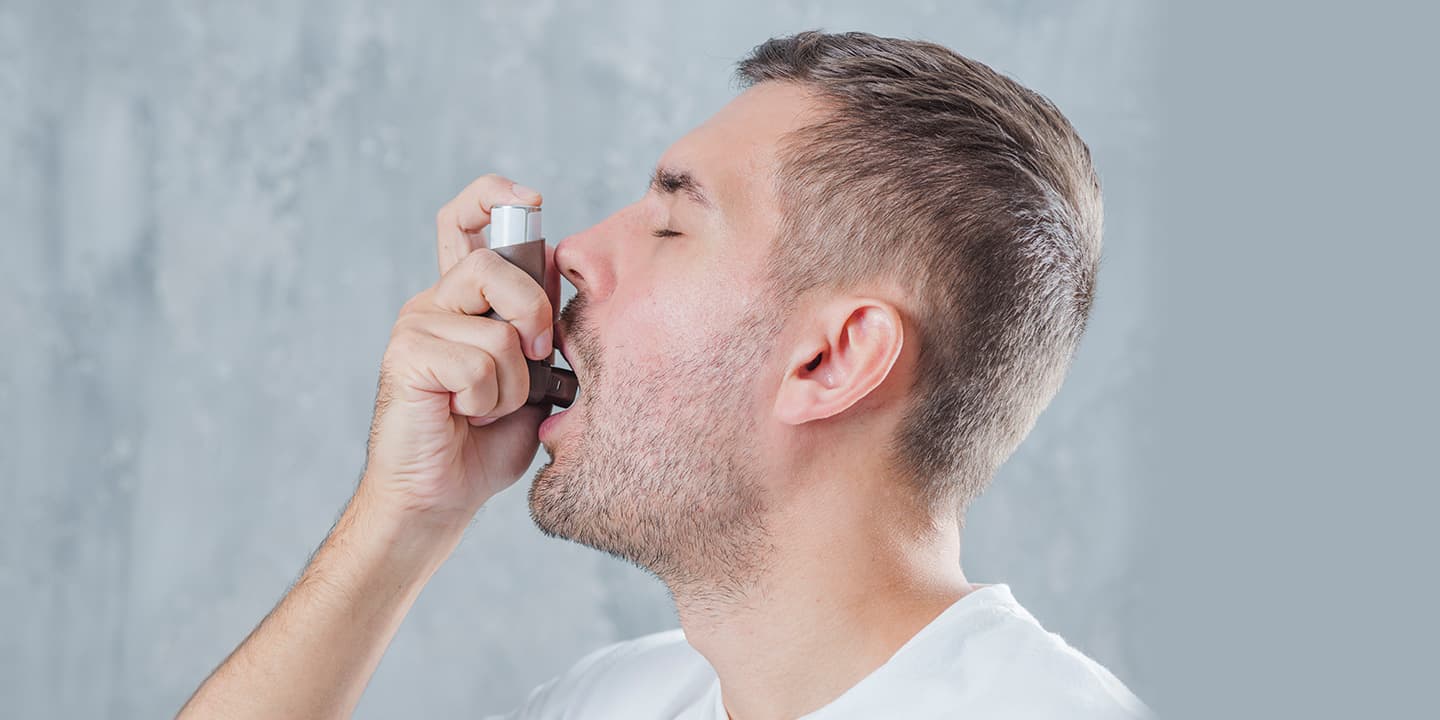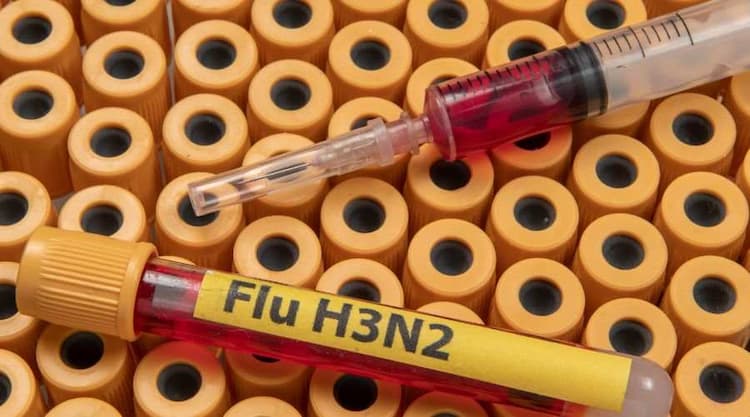Asthma: Types, causes, symptoms, and treatment

Medically Reviewed By
Dr. Ragiinii Sharma
Written By Srujana Mohanty
on Jul 12, 2022
Last Edit Made By Srujana Mohanty
on Mar 17, 2024

Asthma is one of the most common chronic lung conditions. It is a long-term condition that can affect young children and adults to have a life-threatening asthma attack anywhere anytime where they have difficulty breathing.
People with asthma have narrow and swollen airways that make it difficult for air to pass and cause quick breathing spasms. Coughing, wheezing with a whistling sound while breathing, and shortness of breath are some common asthma symptoms.
For a few, asthma may be a minor condition, while for others, it may be a chronic problem that can interfere with their daily activities and routine. Asthma has no cure, but the symptoms can be treated and managed through bronchodilators and other medications.
However, asthma, as a condition, changes over time. Your doctor will regularly monitor your signs and symptoms and adjust the treatment. This article explores the causes, symptoms, and treatment options of asthma.
Asthma: What is it?
Normally, when we breathe, the air passes through the nostrils, into the airways, and to the lungs. The lungs are an intricate network of numerous airways that help transfer oxygen to the bloodstream.
Asthma or bronchial asthma is when the lining of the airways gets swollen, and the muscles engulfing them tighten, causing a mucus formation along the airways. The mucus reduces the amount of air to pass through. And so, a person with asthma wheezes (a whistling sound while coughing hard), and the chest muscles tighten.
According to the World Health Organisation (W.H.O), it is a major non-communicable disease that affects the lungs in both children and adults, while it is more common among children. Statistics show that asthma has affected an estimated 262 million people in 2019 and caused 455 000 deaths globally.
Asthma attack: What is it?
Normal breathing relaxes the airways and muscles around them, allowing a smooth exchange of gases and oxygen delivery to the bloodstream. But, during an asthma attack, the following sequence of events occurs.
- Bronchospasm: The muscles around the airways tighten, and constricted airways do not allow the free flow of air.
- Inflammation: The airways swell and become narrow, reducing the amount of airflow.
- Mucus formations: inflammation and spasms create mucus in the inner airway lining that can eventually clog the airways blocking the air passage.
When asthma attack symptoms get worse, it is called an asthma exacerbation or flare-up asthma.
What are the types of asthma?
Asthma can be classified into different types based on the severity, cause, and onset.
Based on severity
- Intermittent: Asthma flares up on and off in this type of asthma. Asthma attacks occur intermittently, during which the person feels normal.
- Persistent: In Persistent asthma, the person will have asthma symptoms seen most of the time. The symptoms can be mild or severe.
- Mild persistent: The asthma symptoms occur more than two times a week but not every day and up to four nights a month.
- Moderately persistent: The asthma symptoms are seen every day and at least one night a week. This type of persistent asthma can affect your daily activities.
- Severe persistent: The symptoms are seen day and night, limiting the daily activities.
Based on the cause
- Allergic: In some, asthma occurs due to certain allergens like pollens, molds, dust, fur, or feathers of animals.
- Non-allergic: Factors other than allergies cause an asthmatic attack. It may be stress, exercise, infections, medications, occupation, weather conditions, or other disorders. These can be further categorised into the following types.
- Exercise-induced asthma: Also called exercise-induced bronchospasm, is often triggered by exercise.
- Occupational asthma: People who work in an environment that can trigger asthma have occupational asthma. It can be common among people working in mines or factories or exposed to irritants.
- Asthma-COPD overlap syndrome (ACOS): When you have asthma and pulmonary diseases together, it triggers an asthmatic attack, making it difficult to breathe.
Based on the onset of asthma
- Adult-onset: The symptoms of asthma are observed after the age of 18.
- Paediatric: Known as childhood asthma, it is seen in children before the age of 5, affecting toddlers and infants. And most children who develop asthma at a young age outgrow asthma.
What are the signs and symptoms of asthma?
Though the symptoms of asthma vary from one person to another, one of the most common symptoms seen among people having asthma is wheezing.
Other signs and symptoms include:
- Coughing, especially at night or while talking, laughing, or exercising,
- Shortness of breath,
- Difficulty in talking,
- Fatigue due to continuous coughing,
- Prone to infections,
- Pain and tightness in the chest region,
- Wheezing when exhaling- a common sign of asthma in children,
- Trouble sleeping due to shortness of breath, persistent coughing, or wheezing during the night,
- Coughing or wheezing worsens with viral infections, colds, and common flu.
Asthma flare-up is when the asthma attack symptoms- shortness of breath, breathing difficulty, wheezing, coughing, and severe pain and tightness in the chest occur continuously and persistently.
Sometimes the symptoms worsen, causing an asthma emergency. Some of the other symptoms of asthma that call for immediate medical attention include:
- Difficulty in breathing
- gasping for air through the mouth,
- Confusion,
- Faintness or dizziness,
- Difficulty in talking and walking,
- Fingernails and skin turn pale or blue.
What are the causes of asthma?
According to the National Heart, Lung, and Blood Institute (NHLBI), there is no single factor causing asthma. Experts believe that a combination of multiple factors causes asthma. They include:
- Genetics: A person is more likely to develop asthma if a parent or sibling has it.
- History of viral infections: People with a medical history of viral infections such as respiratory syncytial virus infection (RSV) developed during childhood may be more likely to have asthma.
- Immunity: Infants or toddlers develop immunity over the years that can help fight infections and diseases. When the developing immunity is not strong enough to fight asthma, children develop this condition.
What are asthma triggers?
Exposure to factors such as irritants or allergens can trigger asthma. Asthma triggers can worsen the signs and symptoms of asthma. Here are some of the allergic substances that can cause such sensitivity. The asthma triggers, nature, and severity of sensitivity vary individually.
- Airborne allergens- pollen, dust mites, mold spores, furs and feathers of animals (pet danders), or particles of cockroach faeces,
- Physical exertion and exercise,
- Exposure to cold, moist air,
- Respiratory and Viral infections, like the common cold,
- Exposure to polluted air, smoke from vehicles, cigarettes,
- Certain medications such as NSAIDs (ibuprofen, naproxen),
- Emotional distress,
- Certain foods, preservatives, processed foods, dried fruits, beer, wine,
- Smoking,
- Gastrointestinal conditions- Gastroesophageal reflux disease (GERD).
Asthma: Who is at risk?
One can develop asthma at any age. People with the following conditions are at a greater risk of having this condition.
- Having a blood relative, parent, or sibling with asthma, such as a parent or sibling,
- Having allergic conditions- atopic dermatitis (a red itchy skin condition), hay fever,
- Being overweight or obese,
- Smoking or exposure to secondhand smoke,
- Constant exposure to polluted air, chemicals, exhaust fumes, cement dust, farming, mining, manufacturing, and hairdressing
Asthma: Diagnosis and treatment
Diagnosis of Asthma
If you have asthma symptoms or had an asthma attack, diagnosis of asthma primarily includes a physical exam to rule out the possibilities of another respiratory infection or chronic obstructive pulmonary disease (COPD). The physician will study the symptoms, check the history of associated conditions (if any), and read the allergic factors.
After a physical check, you may have a lung function test that helps determine the amount of air passing through the airways. The tests include:
- Spirometry: The test that estimates the narrowing of bronchial tubes.
- Peak flow metre: A device used to measure how hard you can breathe. A low reading indicates severe lung condition or asthma.
Other tests include:
- Methacholine test: The methacholine sensitivity test detects if you have asthma. This can be one of the initial lung function tests to diagnose asthma.
- Imaging tests: Tests such as a chest X-ray can help detect structural anomalies or infections that can cause breathing difficulties.
- Sputum eosinophils testing: Saliva or mucus test discharged while coughing looks for certain white blood cells (eosinophils).
- Allergy testing: A skin test or blood test may help know if you are allergic to asthma triggers.
- Provocative testing for exercise and cold-induced asthma: The doctor evaluates the airway obstruction before and after vigorous physical activity or taking breaths of cold air.
Asthma Treatment Options
Treatments and medications for asthma can be categorised into four different types.
- Quick-relief medications
These medications and treatments in the event of an asthma attack provide quick relief from breathing problems and asthma symptoms. Bronchodilators, one of the common quick-acting medications for asthma, work within minutes that relax the airways. These medications are generally administered orally, through injections, inhaled, or a nebulizer. They can also treat sudden asthma symptoms and prevent the possibility of an asthma flare-up.
If you observe anyone having an asthma attack, ask them to sit upright and assist them using an inhaler or nebulizer. After continuing with medications or inhalation a couple of times, or if the symptoms do not recede for more than 20 minutes, seek immediate medical attention.
- Long-term control medications
Controller medications are daily medications that reduce the severity of the asthma condition. They do not help manage sudden asthma attacks or flares up.
Some of the long-term controller medications include:
- Anti-inflammatory medications: Taken orally to help reduce swelling and mucus production in the airways. These are usually taken with inhalers and corticosteroids.
- Anticholinergics: These medications are usually taken every day with anti-inflammatories to curb the tightening of the muscles around the airways.
- Long-acting bronchodilators: These medications work by keeping the airways open and helping relax the airway muscles. These are usually administered with anti-inflammatory asthma medications
- A combination of quick-relief and long-term control medications
A combination of treatments/ medications depends on the asthma type, age, and asthma trigger. The physician devises such combinations to reduce sudden asthma triggers. The treatment plan also involves regular monitoring of symptoms and essential steps to be taken up during an asthma attack.
- Biologics
For severe asthma, biologics injection or infusion is given when there is nil response to other treatments. These medications work on specific antibodies, disrupting the pathways causing asthma inflammation and initiating asthma control.
- Minimally invasive surgery- Bronchial thermoplasty
Bronchial thermoplasty involves an electrode that heats the airways inside the lungs. This helps reduce the muscle size around the airways and prevents muscle tightening. It is a minimally invasive surgical procedure intended to help relieve people with severe asthma conditions.
Frequently Asked Questions
-
Is asthma curable?
Asthma is not curable but is a highly treatable disease. The symptoms of asthma can be controlled to a negligible state where a person can be free or relieved of sudden asthmatic attacks. However, every individual's asthma condition is different.
-
Why does asthma get worse at night?
The exact reason why asthma triggers during the night is not known. However, certain theories explain that sleep causes changes in bronchial functions leading to sudden coughing and wheezing. While some experts believe that increased allergen exposure, sudden cooling of airways, the reclined position, and hormones together follow a circadian pattern, worsening asthma symptoms at night.
-
What foods help asthma?
Foods such as almonds, hazelnuts, seeds, green leafy vegetables, carrots, milk, sweet potatoes, bananas, apples, and fortified orange juice are ideal for people with asthma. It is necessary to include foods rich in vitamins C, E, D, beta-carotene, magnesium, flavonoids, and omega-3 fatty acids.
Conclusion
Asthma is a chronic condition where the bronchioles and airways of the lungs get inflamed, restricting the amount of airflow. Coughing with whistling sound-wheezing, breathing difficulty, fatigue, and difficulty talking are common asthma symptoms. A sudden asthma symptom that worsens can cause a life-threatening asthma attack.
Asthma can affect infants, toddlers, children, and adults. And is known to be triggered by many factors or asthma triggers. Asthma, as a condition, varies among individuals, and the medication and line of treatment for asthma depends on the severity and type of asthma.
Asthma treatments are majorly medications taken orally, injected, inhaled, or with the help of a nebulizer. Bronchial thermoplasty is one of the novel treatment modules introduced for people with severe asthma. Connect with your doctor if you observe signs and symptoms or know about asthma.




